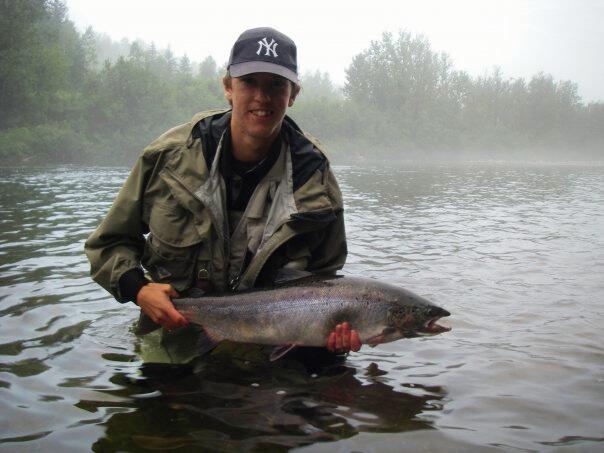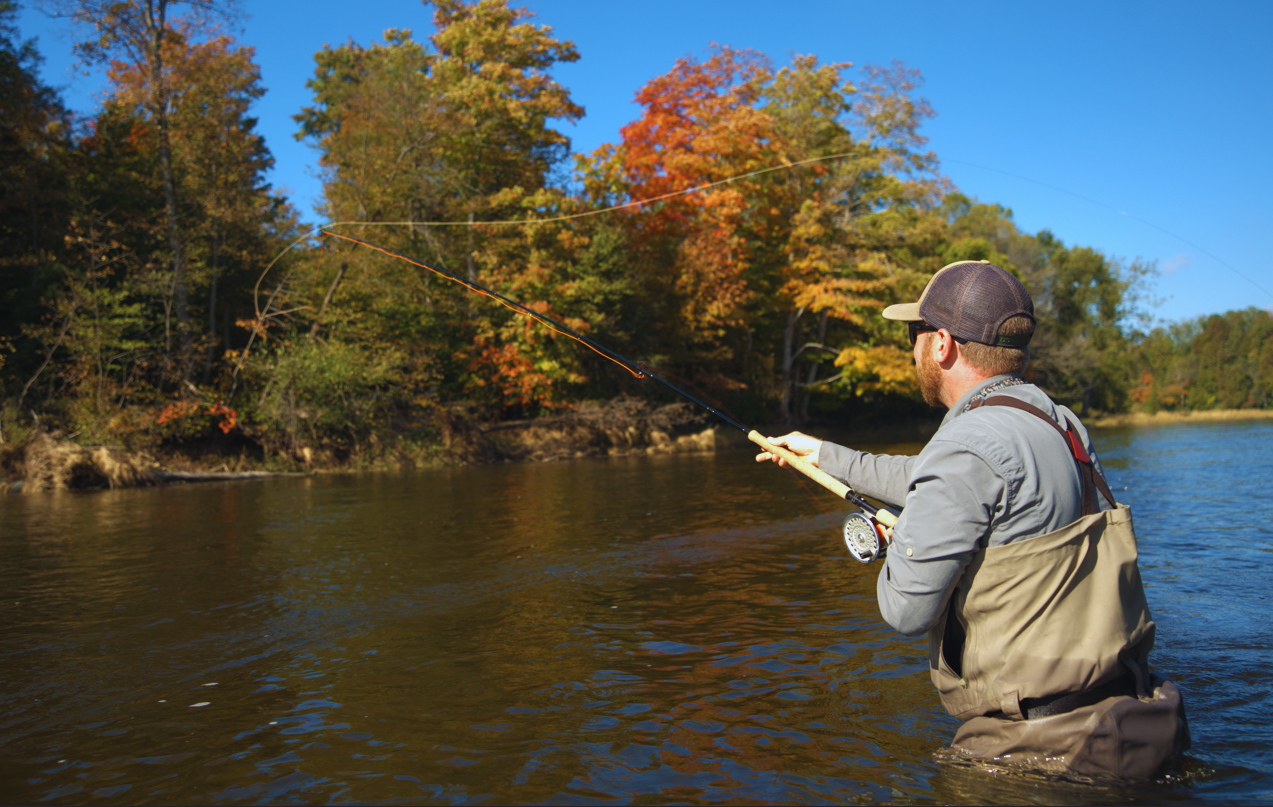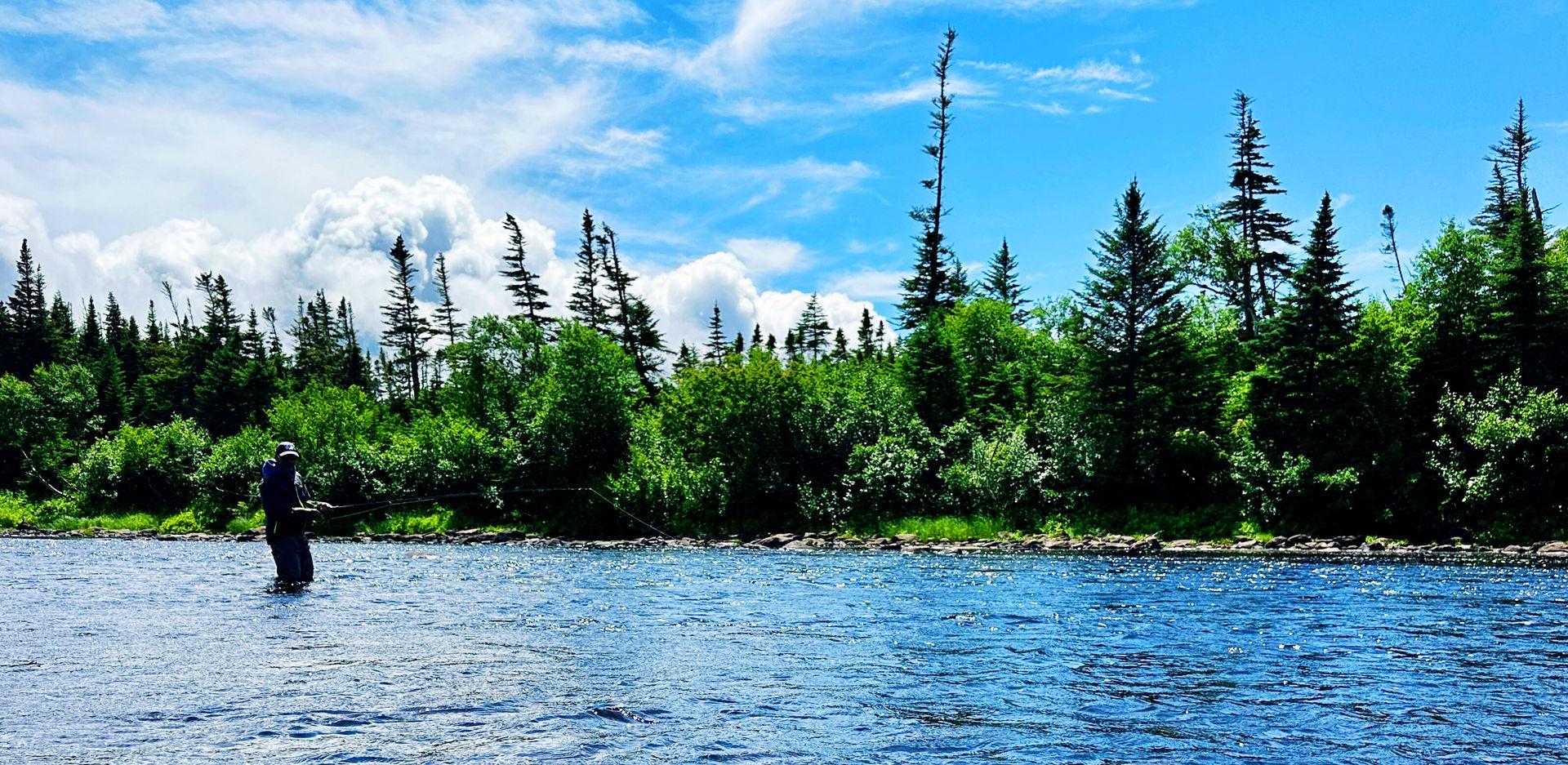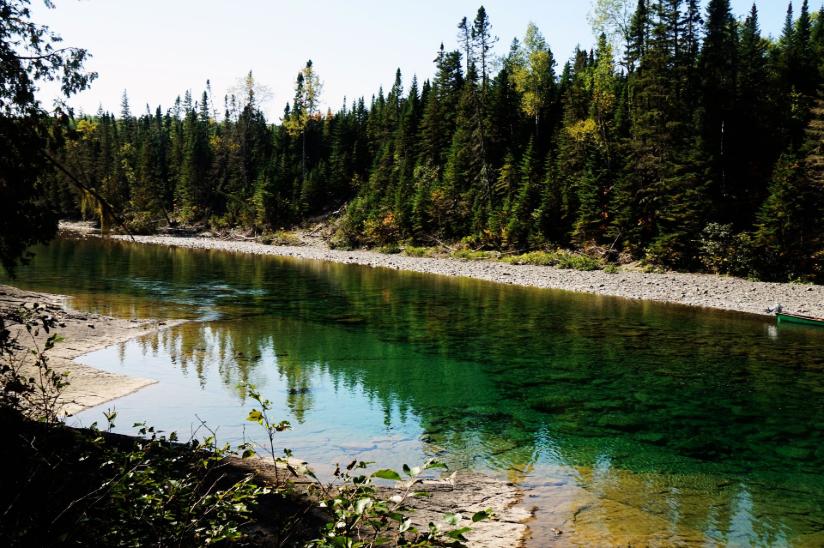By Raphaël Magnan
The Atlantic salmon is a mythical fish that every angler wishes to capture at least once. For fly fishing enthusiasts, it is the ultimate experience. Its size, strength, and beauty make it the king of rivers. The places where it is found are among the most beautiful in our territory. Personally, the salmon holds a special place in my heart. I had the chance to fish it for the first time on July 28th, 2007, on the Sainte-Anne River in Gaspésie. That morning, feeling the line tighten violently triggered my passion! I remember everything, even after all these years.

I had prepared extensively for this first experience, spending hours practicing my casting and reading about the subject. Although this helped, there were challenges once in the river. Salmon fishing is often difficult, but that's what makes it rewarding. A good memory of success stays with us for a long time. Technical mastery is essential to increase our chances of success. In the following paragraphs, I will discuss the key technical elements for salmon fishing.
Your cast at short, medium, and long distances
Starting salmon fishing without mastering the basics of casting can create frustrations and overshadow the experience. Make sure to control your cast at short and medium distances. Good control means being able to lay the line and leader straight on the water, without excess energy or loss of tension. Comfortable casts of 50 to 60 feet will suffice for fishing in 80% of situations. Most of the salmon I have caught were at this distance. Long-distance casts remain important, especially to reach less solicited fish or cover the pools when the water level rises. To cast far, the secret is to practice, practice, and practice again!

The positioning of the rod during the drift of the fly
As simple as it may seem, it can sometimes be difficult for novices to integrate this technique! It is crucial to properly position your rod during the drift. Generally, the tip of your rod should be very close to the surface of the water to maintain constant tension between the fly and the rod. Although it seems insignificant, I often see novice anglers holding their rod too high, leading to a lack of tension. This lack of tension not only affects your back cast when pulling the fly out of the water but also your sensitivity when a salmon strikes your fly. Do not neglect this detail, as opportunities to capture a salmon in a day are often rare. Missing a bite or a sign of action on your fly would be very disappointing!

Hauls
Hauls are essential for intermediate and advanced anglers, especially regarding distance. A good haul allows the rod to bend more deeply, increasing the energy transferred to the line. This gives line speed as it travels in the air, reducing the effort needed for the same distance without haul. It is crucial to practice this technique well, as poor execution of the haul can become a handicap. Before your first trip, explore the nuances of this technique if you have not yet mastered it.
Changing direction
Making changes in direction is common in salmon fishing. For example, with a wet fly, the idea is to make it cross the pool from one side to the other. You need to cast at an angle to the riverbank, so the fly lays on one side of the pool and drifts with the current to the other side. Once the drift is complete, the line is often parallel to the shore, requiring a new change of direction to reach the other side of the pool.
Given the number of casts made in a day of fishing, it is essential to minimize false casts during changes in direction. For an angle of 45 degrees or less, practice changing direction without false casting. Position your feet in the desired direction and make a natural body rotation when pulling the line out of the water. During the pause on the backward cast, the tip of the rod should point to the sky.
Mends
Have you ever heard this term? If not, the following lines will be crucial to improve your technique. Mend in fly fishing are essential to reposition the line and adjust the drift of the fly. In salmon fishing with a wet fly, it is common to speed up or slow down the drift depending on the current of the pool to make the bait more attractive. In dry fly fishing, the goal is to create a natural drift to prevent the fly from being pulled by the line, which would create a V on the surface. The drift speed is as important as the cast; it should be a constant concern for any salmon angler. Generally, the walking speed of a person is a good reference to reproduce.
The roll cast and spey casts
Salmon pools are rarely free of obstacles that could hinder the backward cast. It is not uncommon to have to fish with trees or elevated rocky banks behind us that only wait for one thing; a fly that comes into contact! At some point, it can become distracting and frustrating to coexist with these structures that hinder our performance. The roll cast or even better the spey cast has been a real revelation for me over the years. For those who are unaware, this type of cast offers the advantage of using the water's traction to put tension on the line so the line never travels aerially behind you. You can then cast with a restricted rear space without worrying about breaking your fly on any obstacle.
For those who have never practiced this type of cast, I suggest you first familiarize yourself with the roll cast before moving on to spey casts. It will be useful in many situations. However, be aware that the roll cast has an important limitation, no change of direction is possible.
Casting with closed eyes
You're laughing? It was intentional! You will understand my allusion when fishing at dawn or dusk, when visibility is almost nil. These are often the best fishing moments! Seeing the line in low light is almost impossible. To get used to it, practice casting with your eyes closed and feel your cast. You will be surprised to realize how secondary the eyes can be. Obviously, don't forget your headlamp to get out of the water safely.

In conclusion, spending time on the water is essential to gain experience. Do not limit yourself to comfortable places; broaden your horizons, that's how you progress. Analyze the river and its environment before casting to develop an effective strategy. Stay focused at all times, a capture opportunity can arise at any moment. If your concentration wanes, it's better to take a break. Finally, when you have the king of our rivers at the end of the line, savor every moment. If these tips contribute to your success, my mission will be accomplished.

